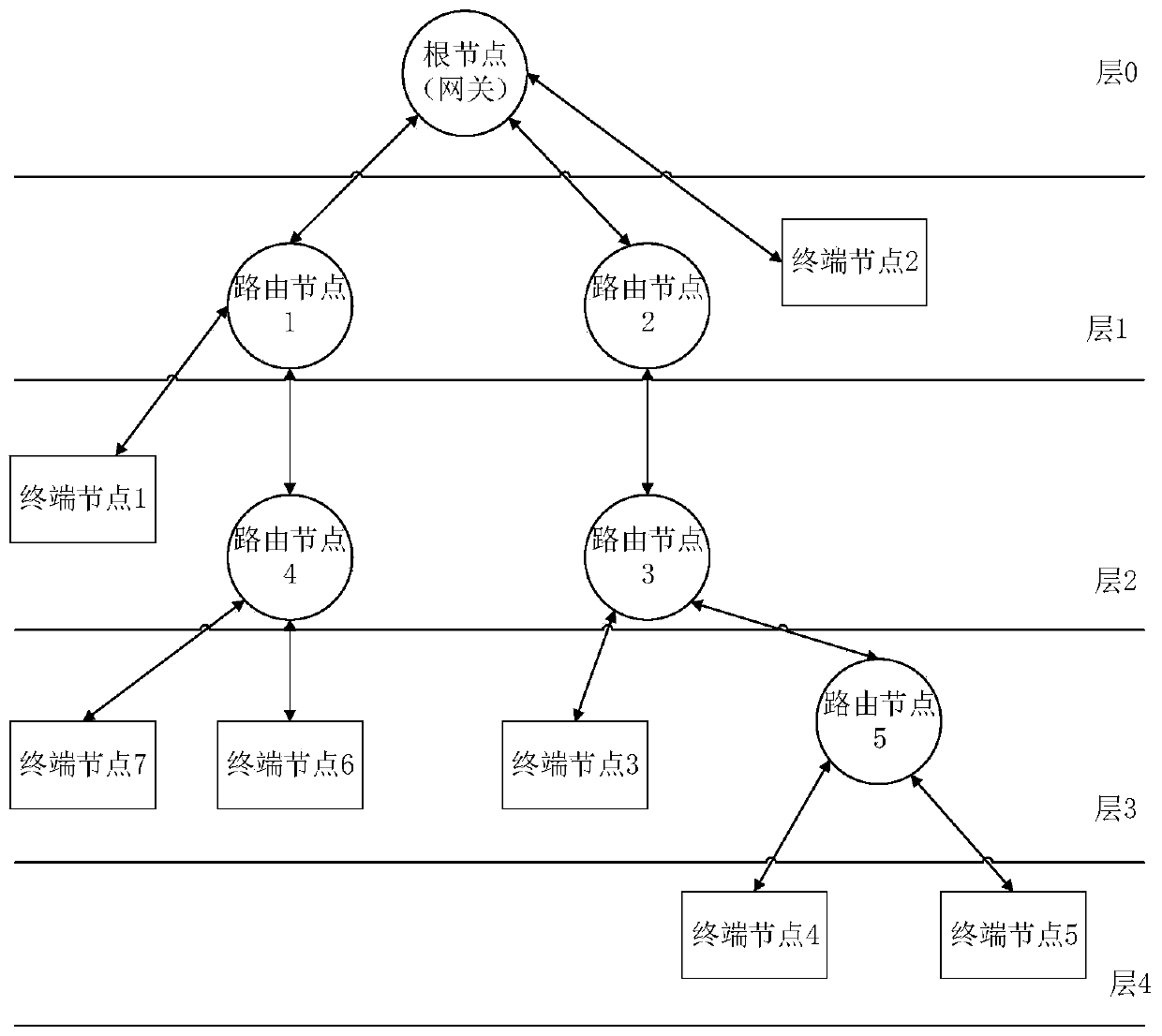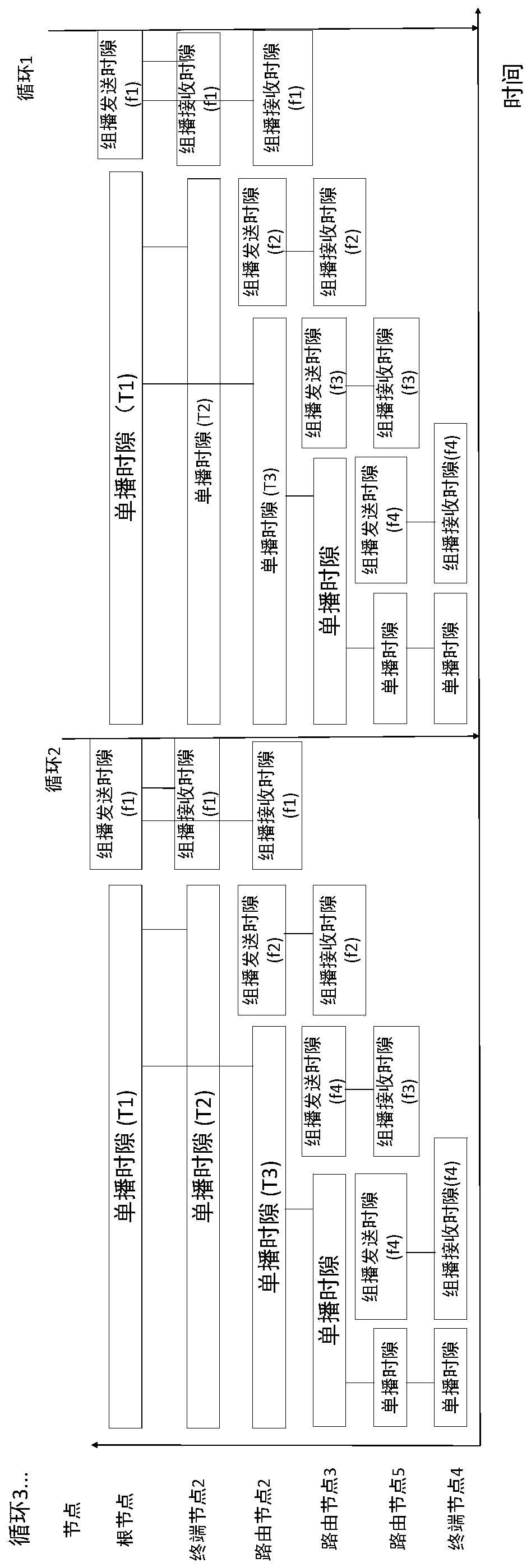Wireless self-organizing network management method based on time synchronization and frequency synchronization
A technology of wireless self-organization and frequency synchronization, which is applied in the direction of synchronization devices, network topology, wireless communication, etc., can solve the problems of unable to lay wires, complex cable connections, and signal attenuation below the effective range, so as to improve the success rate and reliability Effects of Broadcast/Multicast Communication
- Summary
- Abstract
- Description
- Claims
- Application Information
AI Technical Summary
Problems solved by technology
Method used
Image
Examples
Embodiment Construction
[0044] The invention discloses a wireless self-organizing network management method based on time synchronization and frequency synchronization, including a whole-network multicast process starting from a root node and a whole-network multicast process starting from a non-root node,
[0045] Such as figure 1 As shown, the root node, the terminal node and the routing node form a tree topology structure, the upper layer associated node is called the parent node, and the lower layer associated node is called the child node; when the tree topology structure is formed, the parent node and the child node are Time synchronization, the purpose of synchronization is to divide the time into fixed time slots. In the topological structure, the parent node is closer to the root node than the child node. Synchronization is divided into 3 time slots, multicast receiving time slot, multicast sending time slot and Unicast slot.
[0046] The network-wide multicast process starting from the ro...
PUM
 Login to View More
Login to View More Abstract
Description
Claims
Application Information
 Login to View More
Login to View More - R&D
- Intellectual Property
- Life Sciences
- Materials
- Tech Scout
- Unparalleled Data Quality
- Higher Quality Content
- 60% Fewer Hallucinations
Browse by: Latest US Patents, China's latest patents, Technical Efficacy Thesaurus, Application Domain, Technology Topic, Popular Technical Reports.
© 2025 PatSnap. All rights reserved.Legal|Privacy policy|Modern Slavery Act Transparency Statement|Sitemap|About US| Contact US: help@patsnap.com



